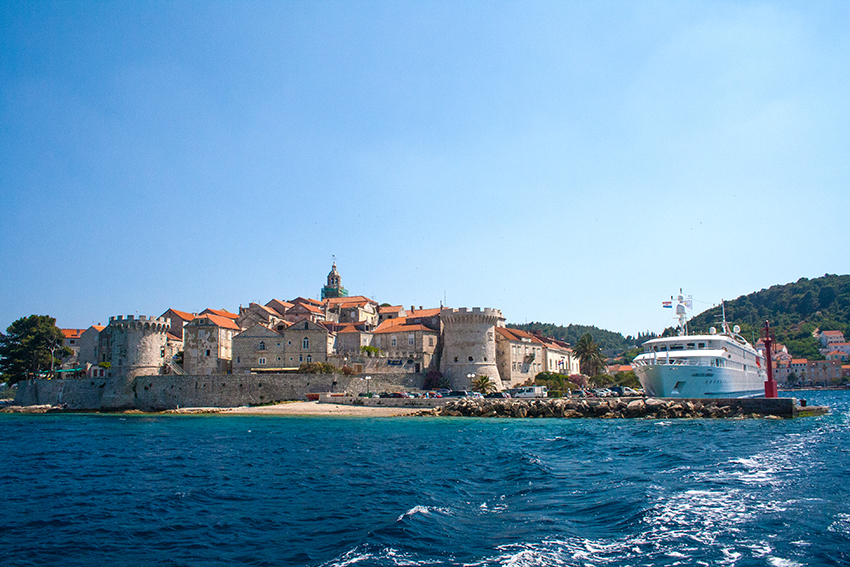It was 8.30am and already a very warm 30º as we left our hotel heading to the island of KorÄula (pronounced ‘Korchula’).
It was day seven of our Dubrovnik and the Dalmatian Coast tour, and we were heading along the winding coastal road. The rising sun was glistening on the water of Gruž (‘groosh’) harbour as we continued along the Croatian mainland and the peninsula of PeljeÅ¡ac, the second largest in Croatia. This beautiful unspoilt peninsula runs parallel to the Dalmatian coast, separating the island of KorÄula from the mainland. The main business in this area, our guide Tangra told us, is tourism, plus red wine, grape growing, mussels and oysters, pointing out the oyster farm in the bay with hundreds of containers bobbing on the ink-blue water. The dry stone walling we passed is the landmark of agricultural land, built with carefully selected interlocking stones, some 150, 200 and even 400 years old. Our journey took us through bright green vineyards and past twisted olive trees – the area also being a producer of good quality olive oil – and very pretty (and very toxic) oleander, a common sight around these parts.
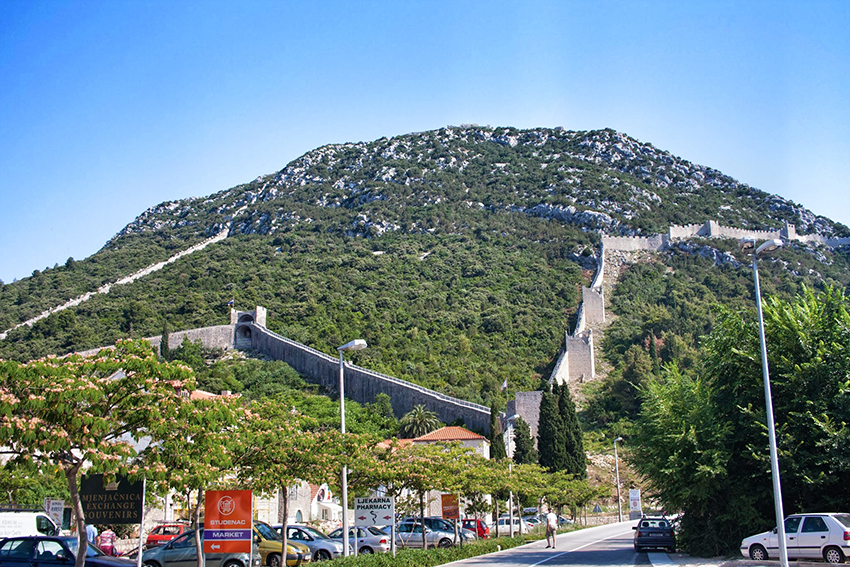
On our way to KorÄula we called in at the historic town of Ston, whose landmark is the 5.5km long stone wall built in the 14th century. This wall, which is open to the public, is thought to be the longest defensive wall in Europe and second longest in the world after the Great Wall of China. If you have the energy, you can walk from Ston to its small sister town, Mali Ston (Small Ston) and enjoy breathtaking views of the charming towns and picturesque coastline. For us however, it was a just a short visit, with just enough time to wander around the smooth cobbled streets and grab a refreshing drink before continuing on to KorÄula.
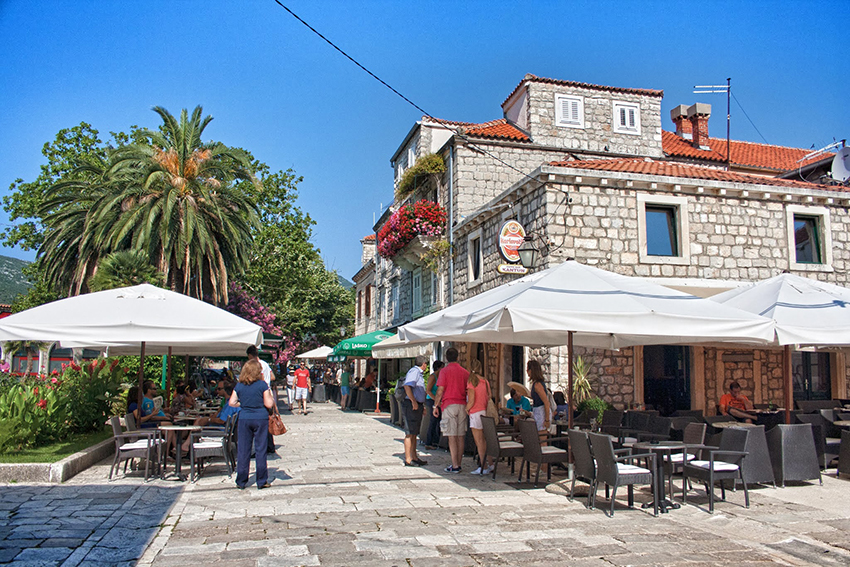
After a cooling 15-minute ferry ride across the turquoise Adriatic Sea, we arrive on the western side of the Old Town peninsula of KorÄula, founded at the beginning of the 13th century, and were met by our local guide, Lea. Dressed head to toe in white linen and with rich copper-coloured hair cut into a choppy bob, Lea was extremely tall – as are many people around this area, her pale face brightened by a flash of deep red lipstick. She told us how excited she was to be using her brand new parasol – apparently she’d been waiting for it for a long time! I could see how it would be such a welcome piece of apparatus if you were walking around in this heat each day.
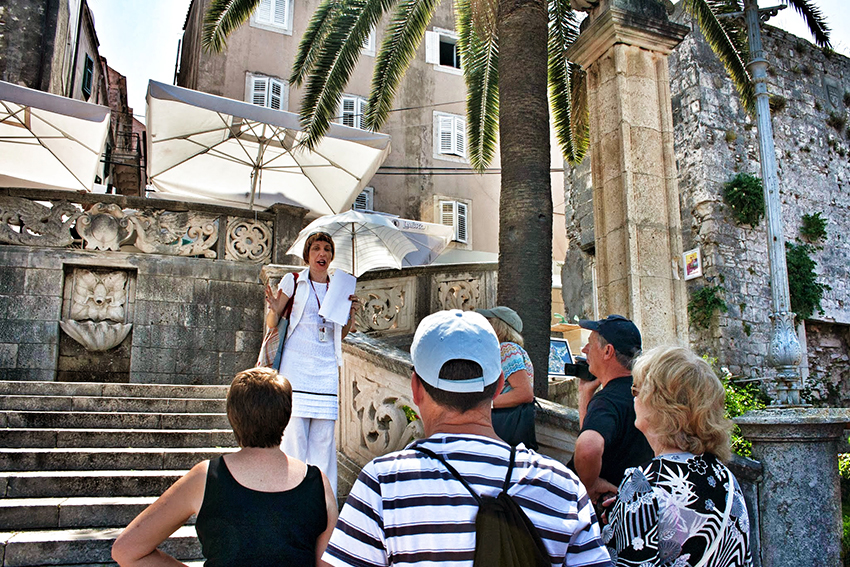
The town is surrounded by thick stone walls dating from the 14th century and towers that were built in medieval times to defend against enemies passing the island. 12 towers once stood on the island, today, just seven remain. Leading us up the stairway which took us through the entrance known as Sea Gate and one of the towers, called Kula Morska Vrata, Lea pointed out the view to the western part of KorÄula Town famous for its sunsets as the sun dips between the peninsula and the rest of the island. Entering the Old Town we walked along the narrow stone streets of the peninsula which gave us a welcome shelter from the heat of the day.
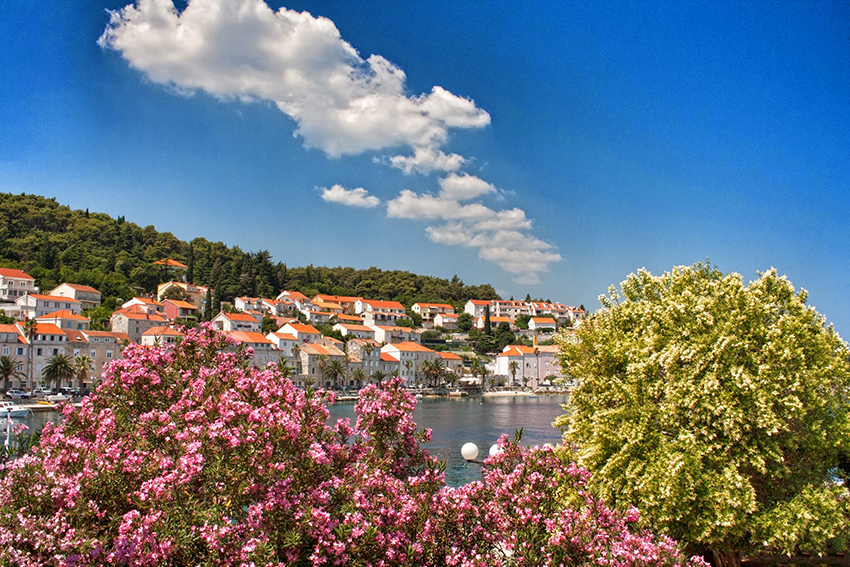
The Old Town of KorÄula itself has an interesting layout, almost like the bones of a fish. There’s a long main street running right through the centre of the town with smaller alleyways fanning out to either side. To the north west the streets are straight allowing the summer breeze known as the ‘maestral’ to come in from the sea, cooling the streets in the hot months. In winter comes the cold wind from the east, the ‘bura’, sometimes so strong that roads are closed as a precaution. On the south-eastern side of the peninsula the streets are more curved, reducing the effect of the bura blowing through. On the day of our visit, there was a pleasant light wind – maybe this was the maestral in action?
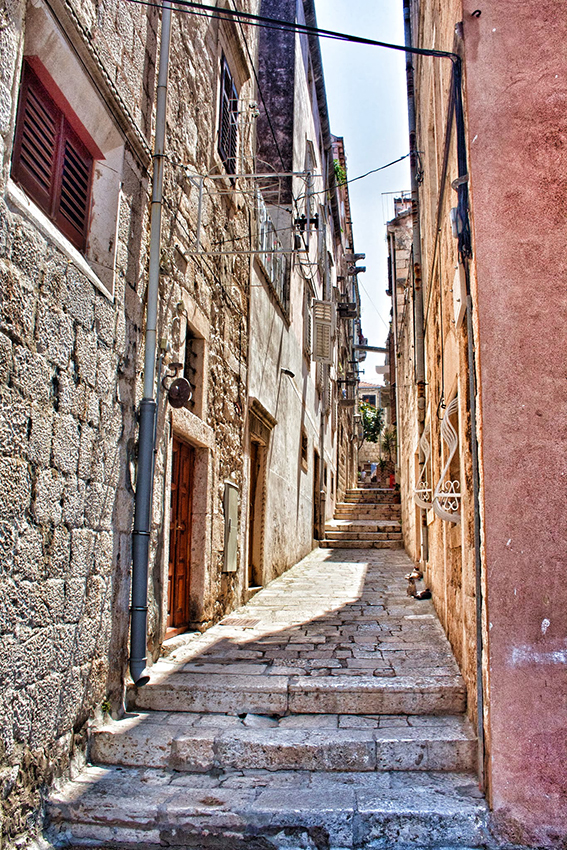
As we walked through the criss-crossed narrow alleyways Lea pointed out the bridges connecting buildings on the opposite sides of the street. These ‘bridge balconies’ joined the houses of close families for easy access, enabling them to cross over the balcony instead of going through the street.
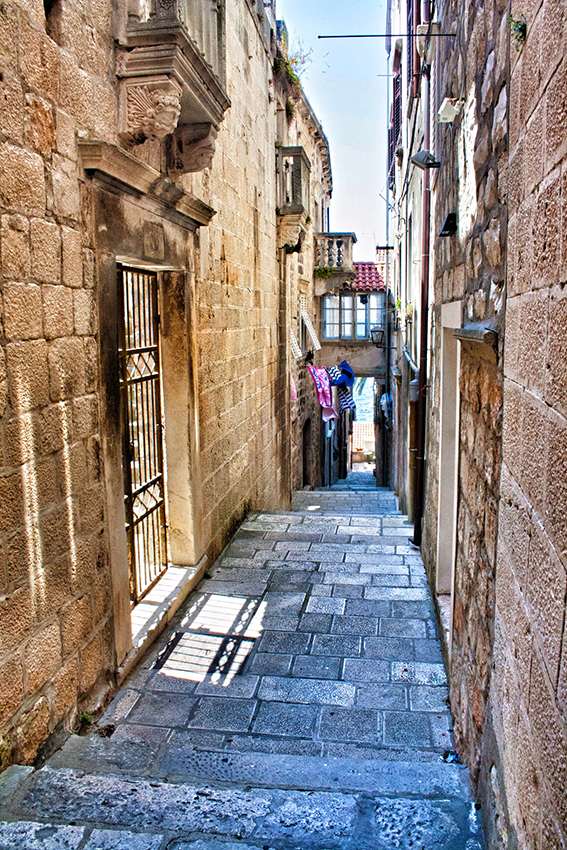
Our tour continued past a giant 25-year-old rubber tree, the largest on the island, through winding streets with the mouth-watering smell of savoury food being carried along on the breeze. The smooth cobbled streets were quiet as Lea guided us along to the museum and on towards the 15th century St. Mark’s church right in the centre of the town.
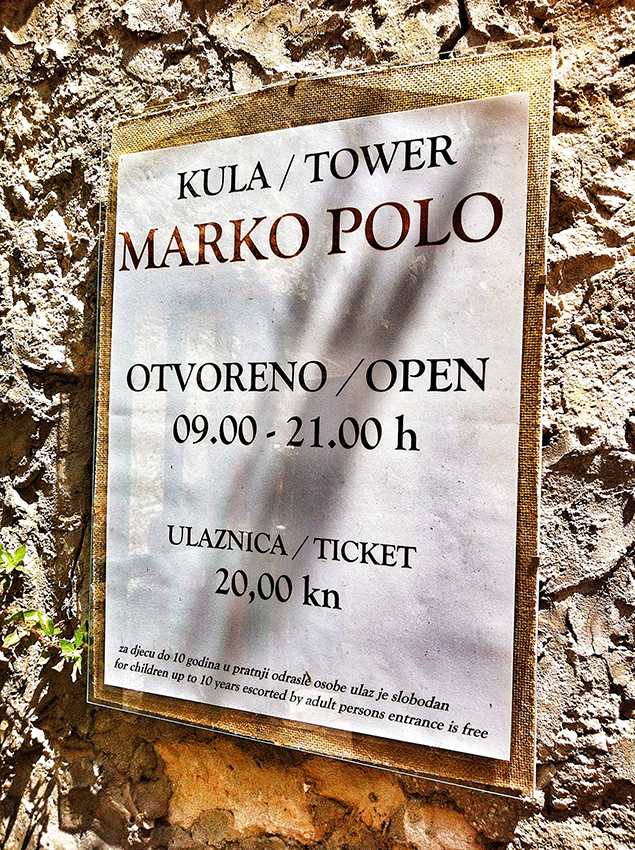
It was here that our tour came to an end. As we said goodbye to Lea, I continued the short stroll on to what is believed to be the house in which Marco Polo was born. The sweet smell of lavender from the pots which lined the wall hit me as I entered the stone doorway and climbed the narrow stairs of the tower or ‘loggia’, to be met by wonderful views over the town and out to sea. It has been argued by some that the explorer and writer was born in Venice and also Curzola off the coast of Dalmatia, but whether this lovely stone building in the centre of KorÄula was Polo’s birthplace or not, it was a lovely little place to call into.
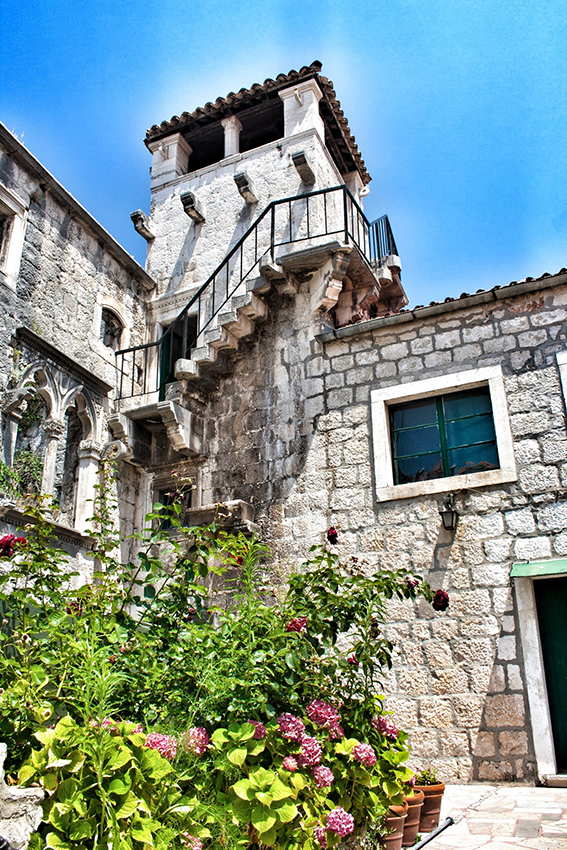
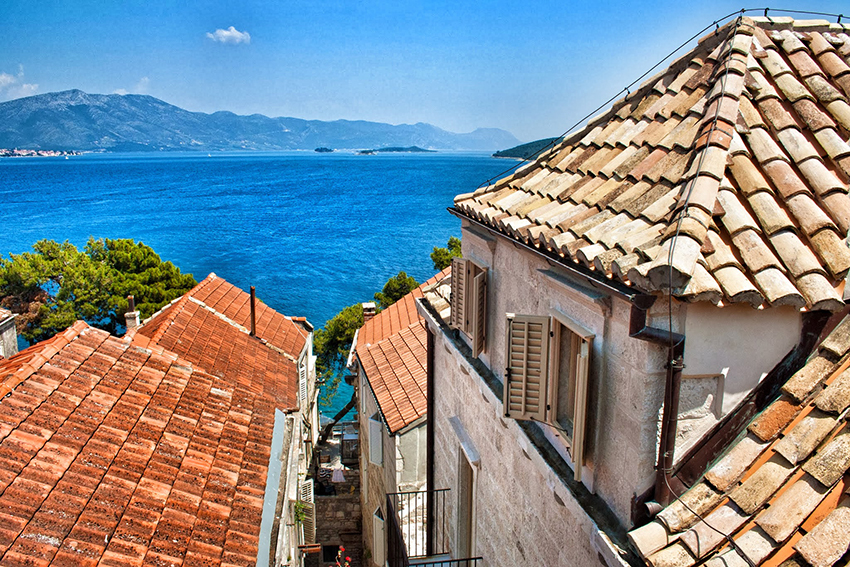
The peninsula is a really pleasant place to wander around: I passed little galleries and craft shops tucked into stone buildings, walked beneath washing hung out to dry across the ornate wrought iron balconies, and busy restaurants with brightly coloured umbrellas fluttering in the breeze. There were plenty of places to eat offering everything from sandwiches to pizza, pasta and seafood – it all smelled delicious! Continuing my explorations of the peninsula, I strolled through the backstreets which lead to the eastern side, lined with more inviting restaurants where people were enjoying a spot of lunch whilst taking in the fantastic views out across the sparkling sea. There was a lovely breeze, and the smell of seafood and wood burning stoves wafted along as I continued north, arriving at Zakerjan Tower (Kula Zakerjan), also called Berim Tower, then back along the main street running through the centre of the peninsula to the Land Gate or Revelin Tower (Veliki Revelin) at the south, built in the 14th century.
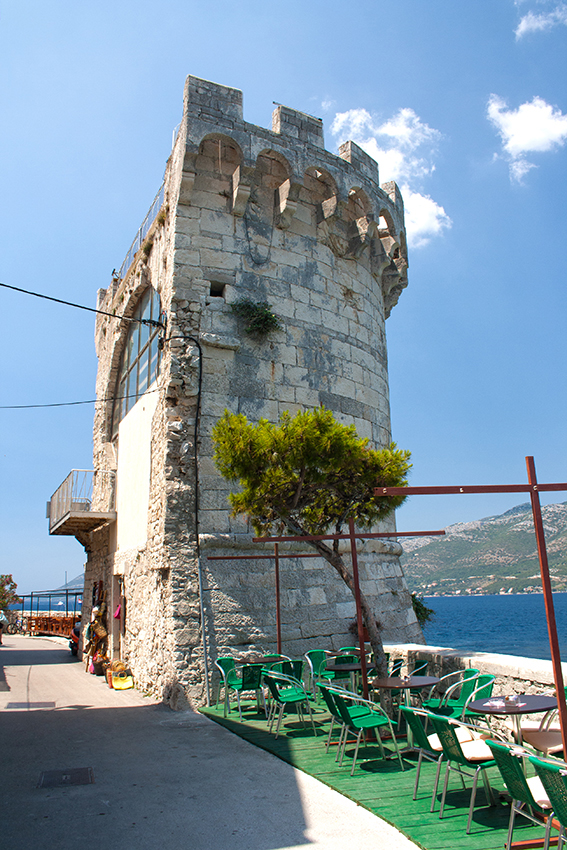
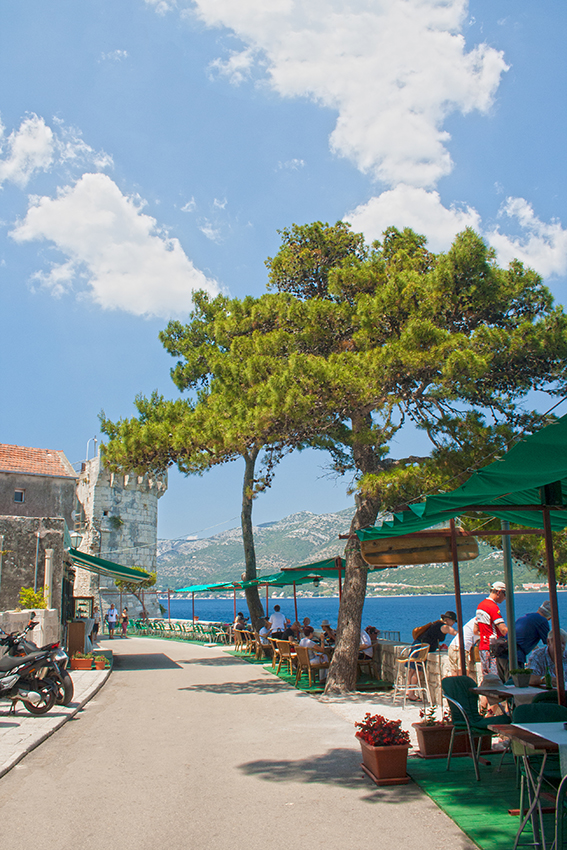
The original wooden drawbridge which stood at the Land Gate was replaced in the 18th century by the sweeping cream stone steps which stand there today. As I made my way down the grand staircase I was met by the lively atmosphere of colourful market stalls selling stones, jewellery, t-shirts, hats and souvenirs and with people hunting for a bargain.

Palm trees rustled in the breeze as I made my way around to our meeting point. It was time to say goodbye to the island of KorÄula after a wonderful few hours on this charming peninsula and a day of stunning scenery, beautiful Croatian sunshine and stories of Marco Polo.

Have you visited KorÄula? Share your stories with us!

